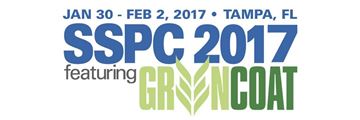Search
Products tagged with 'coating adhesion'
View as
Sort by
Display
per page
Surface Roughness Profile and its effect on Coating Adhesion and Corrosion Protection
Product Number:
51220-238-SG
Publication Date:
2020
$20.00
The Challenge of Balancing Adhesion and Corrosion Resistance in Waterborne Styrenated Acrylic Direct to Metal (DTM) Resins
Product Number:
51217-034-SG
Publication Date:
2017
$20.00
Why Do We Record the Attributes of a Coating Failure as a Result of an Adhesion Test?
Product Number:
51220-229-SG
Publication Date:
2020
$20.00



